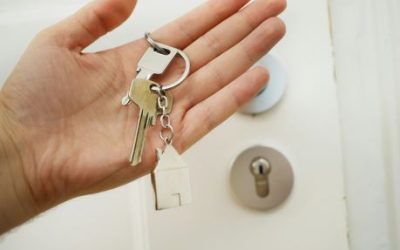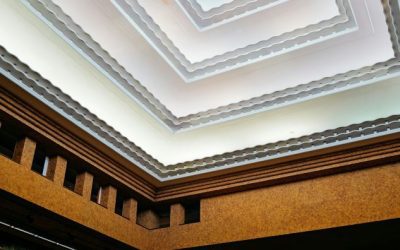Introduction
Post-construction cleaning refers to the process of cleaning up the site after a construction project is completed. It involves removing dust and debris, cleaning surfaces, windows, and floors, and ensuring that the site is safe and ready for occupancy. While post-construction cleaning is important for the safety and health of occupants, it can be a challenging task due to the complexity of the job.
In this article, we’ll discuss the common challenges faced in post-construction cleaning and how to overcome them. We’ll cover everything from dust and debris removal to health and safety concerns, time constraints, and quality control.
Dust and Debris Removal
Dust and debris are common byproducts of construction projects, and their removal is essential for the safety and health of occupants. There are different types of dust and debris, such as drywall dust, sawdust, and construction debris. These materials can cause respiratory problems and eye irritation if left uncleaned.
To remove dust and debris, proper equipment such as industrial vacuums, dust extractors, and air purifiers are required. However, removing dust and debris can be challenging as they can spread easily and settle in hard-to-reach areas.
Cleaning Surfaces
Post-construction cleaning also involves cleaning surfaces such as walls, ceilings, and countertops. Different surfaces require different cleaning methods, and using the wrong cleaning method can damage the surface.
For example, drywall is fragile and can easily be damaged by abrasive cleaning methods. On the other hand, tile surfaces require a more aggressive cleaning method to remove grout residue.
Window Cleaning
Window cleaning is another essential part of post-construction cleaning. Uncleaned windows can cause safety hazards as they can be covered in dirt, dust, and debris. They can also be a source of natural light, which is essential for the well-being of occupants.
Window cleaning can be challenging, especially when dealing with high-rise buildings. To clean windows, specialized equipment such as scaffolds and cherry pickers are needed.
Floor Cleaning
Post-construction cleaning also involves cleaning floors, which can be challenging due to the different types of floors, such as carpet, tile, and hardwood. Each type of floor requires a specific cleaning method and equipment.
For example, carpets require deep cleaning with a carpet extractor, while hardwood floors require gentle cleaning with a microfiber mop.
Cleaning High Areas
Cleaning high areas such as ceilings and light fixtures is also a critical part of post-construction cleaning. High areas can accumulate dust and debris, which can fall and cause safety hazards.
To clean high areas, specialized equipment such as ladders, scaffolds, and aerial lifts are required.
Health and Safety Concerns
Post-construction cleaning can also pose health and safety risks for workers and occupants. Workers can be exposed to hazardous materials such as asbestos and lead if proper precautions are not taken.
To prevent accidents and injuries, proper personal protective equipment such as respirators, gloves, and safety glasses are needed. Adequate ventilation is also required to prevent the buildup of hazardous fumes.
Time Constraints
Completing post-construction cleaning on time can be challenging, especially when dealing with large-scale projects. Time constraints can cause stress and lead to shortcuts that compromise the quality of the cleaning.
To optimize time management, prioritizing tasks and having a well-organized cleaning plan can help ensure that the cleaning is completed on time.
Communication and Coordination
Post-construction cleaning requires effective communication and coordination between different parties involved in the project, such as contractors, architects, and cleaners. Miscommunication and lack of coordination can lead to delays and poor-quality cleaning.
To ensure effective communication and coordination, having a clear line of communication and providing regular updates can help prevent misunderstandings and ensure that the cleaning
Quality Control
Quality control is essential for post-construction cleaning to ensure that the cleaning meets the required standards. Poor quality cleaning can lead to safety hazards and health risks for occupants.
To ensure quality control, regular inspections should be conducted to identify any missed spots or areas that require further cleaning. Having a checklist and following a standardized cleaning procedure can also help ensure that the cleaning is consistent and meets the required standards.
Training and Certification
Post-construction cleaning requires specialized knowledge and skills, such as the proper use of equipment and cleaning methods. Having trained and certified cleaners can help ensure that the cleaning is done correctly and safely.
Providing regular training and certification programs can help improve the skills of the cleaners and ensure that they are up-to-date with the latest cleaning techniques and equipment.
Conclusion
Post-construction cleaning is a complex and challenging task that requires specialized knowledge and skills. From dust and debris removal to health and safety concerns, time constraints, and quality control, there are many challenges that need to be overcome to ensure that the cleaning is completed safely and efficiently.
By addressing these challenges and implementing best practices such as having a well-organized cleaning plan, effective communication and coordination, regular inspections, and providing training and certification programs, post-construction cleaning can be done successfully, ensuring a safe and healthy environment for occupants.
Related Posts
Post Construction Cleaning Services: Everything You Need to Know





0 Comments